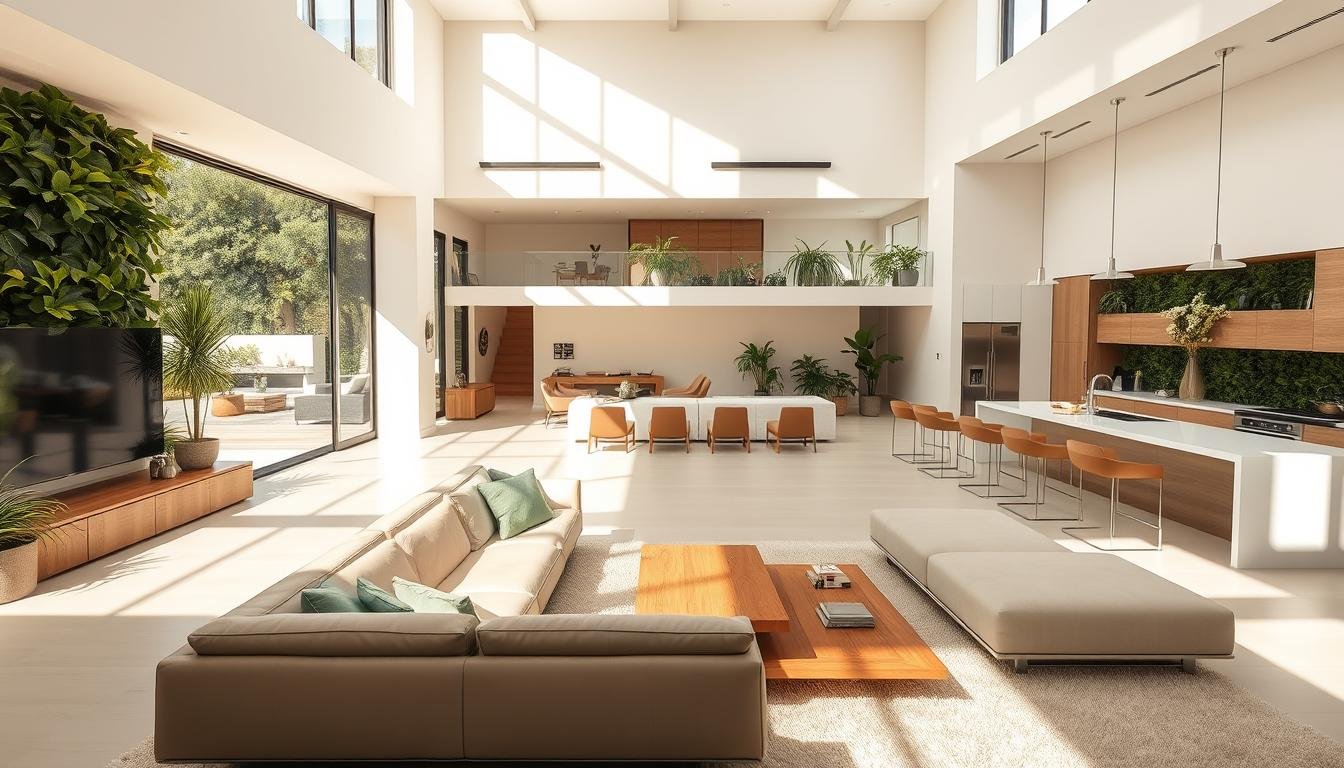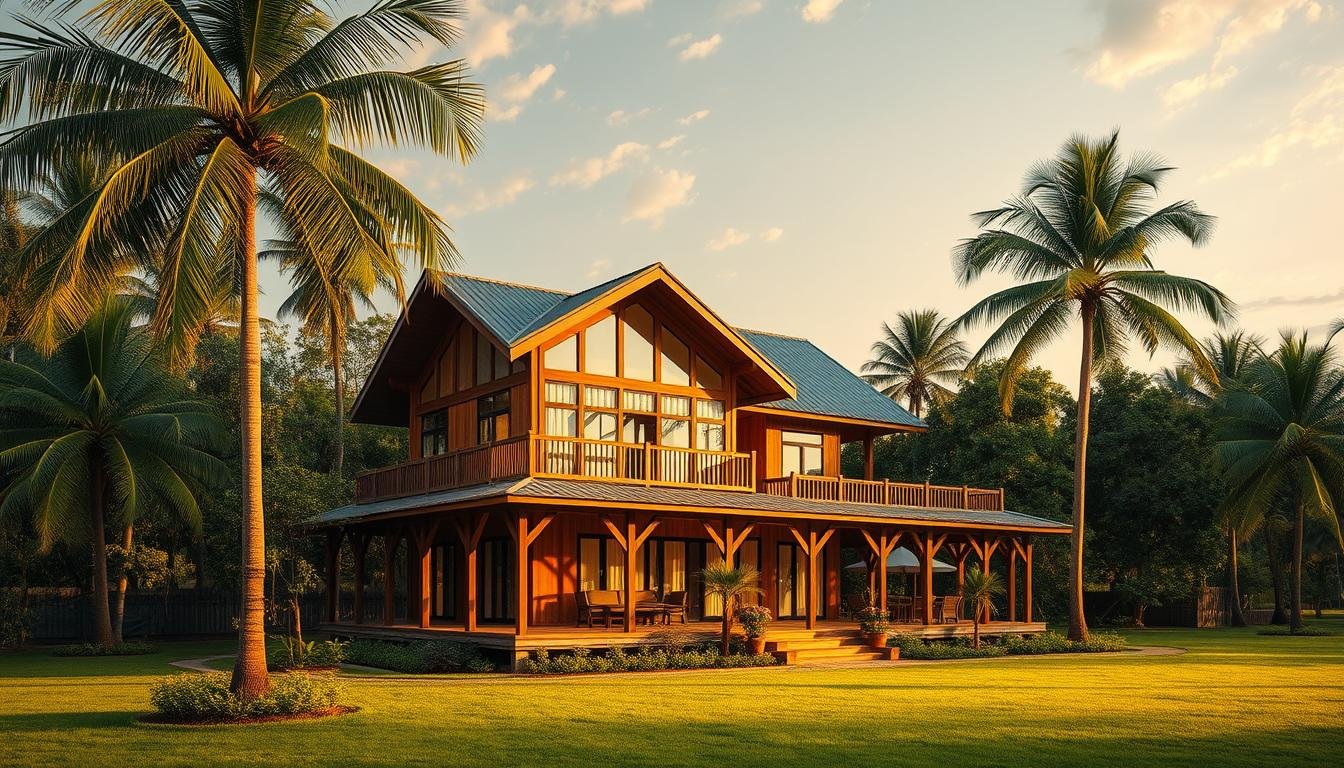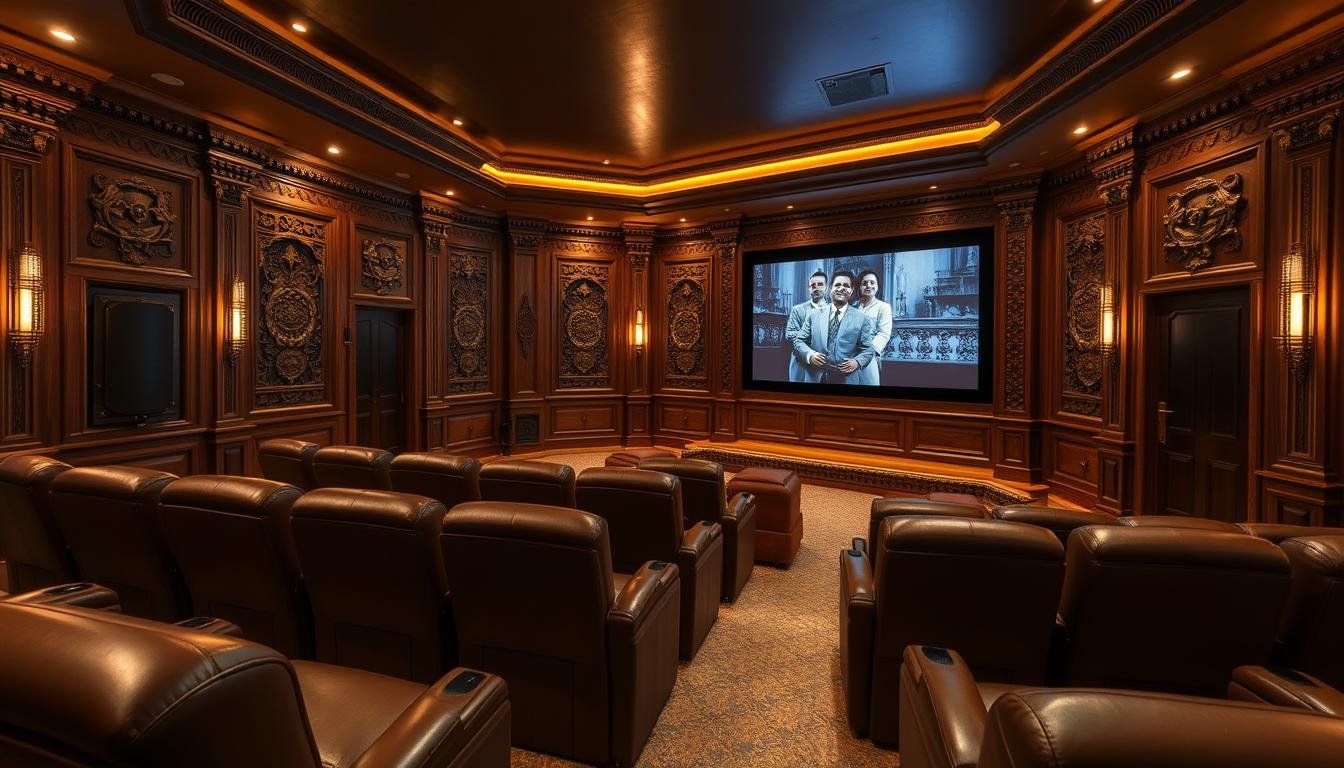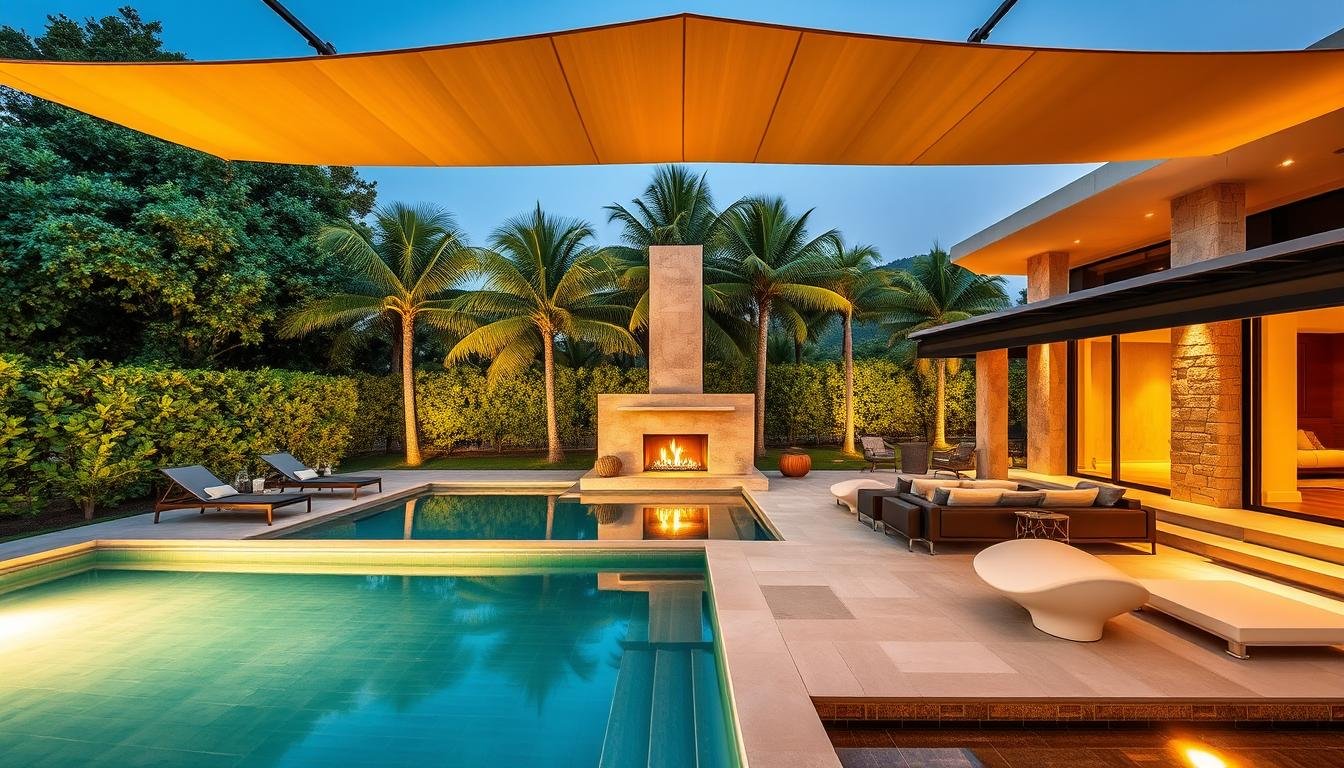Can the colors we choose for our homes really affect our mood and well-being? We look into how color schemes in our interiors can change our feelings and behavior. By learning about interior design color theory, we can pick colors that make our homes feel relaxing, energizing, and happy.
Studies show that bright colors can make us feel 33% more joyful. This shows how important color psychology is in our homes. We’ll talk about how colors can affect our mood and how to choose colors that are good for our minds and bodies.
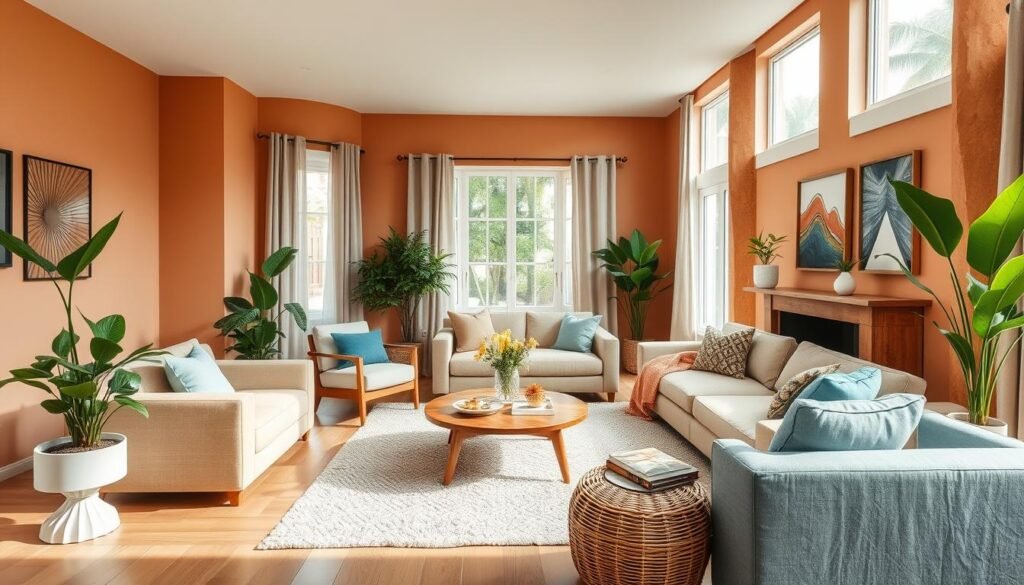
Color has a big impact on our daily lives. By choosing colors wisely, as recommended by residential architects in bangalore, we can make our homes inspiring, calming, and uplifting. We’ll dive into the science of color, the mood effects of warm and cool colors, and the use of neutral colors. This will give you a deep understanding of color psychology in home design.
Understanding Home Interior Color Psychology Basics
Choosing paint colors for our homes involves more than just aesthetics. Color psychology in interior design is key to creating a balanced living space. The colors we choose can greatly affect our mood and emotions. It’s important to grasp the basics of color psychology.
The science behind color perception is complex. It involves the brain, eyes, and cultural background. Different colors can trigger different emotions. For example, warm colors like red and orange can energize us, while cool colors like blue and green can calm us down.
The Science Behind Color Perception
Research shows that 75% of people believe color impacts their mood and emotions. This makes choosing colors carefully in home design very important. By understanding the psychological effects of colors, we can create spaces that improve our well-being and productivity.
How Colors Affect Human Emotions
Colors deeply influence our emotions. Yellow, for instance, is linked to happiness and optimism. Gray, on the other hand, promotes balance and neutrality. Knowing how colors affect our decor can help us create spaces that meet our emotional needs.
Cultural Significance of Colors in Indian Homes
In Indian culture, colors hold deep meanings and are used in decor to reflect heritage and values. Red is seen as auspicious, while white symbolizes purity and innocence. Understanding these cultural meanings can help us create interiors that reflect our cultural background and values.
By considering the psychological effects and cultural significance of colors, we can design spaces that are both beautiful and emotionally supportive. Whether picking paint colors or choosing furniture and decor, knowing color psychology helps us make choices that improve our well-being.
| Color | Emotional Response | Cultural Significance |
|---|---|---|
| Red | Energy, passion | Auspicious in Indian culture |
| Blue | Calmness, relaxation | Associated with trust and loyalty |
| Green | Nature, tranquility | Symbolizes growth and harmony |
Creating Emotional Connections Through Color Schemes
We can make emotional connections through color schemes by knowing how colors affect our mood. Interior color trends are key in color psychology for decorating. They can change how we feel and act. Color psychology and home design go hand in hand, as our home’s colors can impact our happiness.
When picking colors for our homes, it’s important to think about their meaning. Warm colors like red, orange, and yellow boost energy and excitement. Cool colors like blue, green, and purple help us relax and feel calm. Neutral colors like beige, gray, and white bring balance and harmony.
Warm Colors and Their Impact on Mood
Warm colors can greatly affect our mood and energy. Red, for example, brings feelings of love, passion, and anger. It can make a room feel more alive and encourage confidence. Orange increases oxygen to the brain, making us feel more enthusiastic and energetic.
Cool Colors and Their Psychological Effects
Cool colors, like blue, can calm our minds and bodies. Blue lowers heart rate and blood pressure, helping us relax and sleep better. Green is linked to improved mood, independence, love, joy, and inner peace.
Color Combinations That Enhance Well-being
By mixing different colors, we can create a balanced home atmosphere. Combining warm and cool colors brings balance and harmony. Neutral colors add calmness and serenity. Some good color combinations include:
- Blue and green for relaxation and calmness
- Yellow and orange for energy and enthusiasm
- Neutral colors like beige, gray, and white for balance and harmony
Understanding color psychology helps us design homes that boost our emotional well-being. Whether we want to feel energized or relaxed, color psychology and home design can help us achieve it.
| Color | Emotional Effect | Psychological Effect |
|---|---|---|
| Red | Love, passion, anger | Raises energy, encourages confident behavior |
| Orange | Enthuasiasm, energy | Increases oxygen to the brain, enhances feelings of joy |
| Blue | Relaxation, calmness | Lowers heart rate and blood pressure, contributes to sleep improvement |
Room-by-Room Color Selection Guide
Choosing colors for home interiors is key. The right colors can make each room feel special. Warm colors like reds, oranges, and yellows are great for living rooms and dining areas. They add energy and make spaces lively.
Cool colors like blues and greens are calming. They’re perfect for bedrooms and bathrooms. Neutral colors like grays and beiges offer balance and flexibility. They work well in many rooms.
Here are some tips for choosing colors for each room:
- Living room: Warm colors like red and orange create a lively vibe. Cool colors like blue and green promote relaxation.
- Bedroom: Cool colors like blue and green help you relax and sleep. Soft and pastel colors add to the calm.
- Kitchen: Warm colors like yellow and orange boost energy and happiness. Cool colors like blue and green make it calm.
- Bathroom: Cool colors like blue and green bring calmness. Neutral colors like gray and beige offer balance.
Think about how color affects your home’s feel. Use color psychology to make each room inviting. Choose colors that show your personality and lifestyle. Don’t hesitate to try new color combinations to find the perfect fit for your home.
| Room | Recommended Colors | Psychological Impact |
|---|---|---|
| Living Room | Warm colors (red, orange, yellow) | Energizing, lively atmosphere |
| Bedroom | Cool colors (blue, green) | Relaxation, sleep |
| Kitchen | Warm colors (yellow, orange) | Energy, happiness |
| Bathroom | Cool colors (blue, green) | Relaxation, calmness |
Conclusion: Implementing Color Psychology for Harmonious Living Spaces
Understanding the psychology of color in interiors helps us create homes that are not just pretty but also feel right. Colors can greatly affect our mood and how we see our space. By picking colors that match our lifestyle and taste, we make homes that show who we are and help us live better.
Maybe you love the calm of cool blues, the lively feel of warm colors, or the classic look of neutrals. Using color psychology in your home can change it for the better. Talking to interior designers or doing your own research helps you pick the right colors. This way, we can make our homes places of peace, comfort, and creativity.

